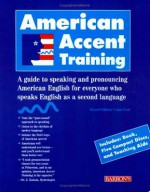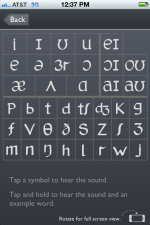
This is the last article of the series English Pronunciation Challenges: What a Latina Learned in an Accent Reduction Class where I share some of the resources I used during my class. These “tools” includes books, apps and web pages that will help you during this process.
Posts in this series:
- English Pronunciation Challenges for Latinos
- 10 Most Shocking Things I Learned About English Pronunciation
- 8 Tools I Used to Improve My English Pronunciation [this post]
Resources I Used to Improve My English Pronunciation
1. Clear Speech: Pronunciation and Listening Comprehension in North American English (Student Edition) by Judy B. Gilbert.
This is more like a workbook with exercises that you need to fill in following the instructor or the CD included. A Teacher’s edition is also available.
 2. Focus on Pronunciation 3 by Linda Lane.
2. Focus on Pronunciation 3 by Linda Lane.
Another workbook with exercises and activities when you reach an intermediate to advanced level. This one includes two audio CD’s. I used this book for the second Accent Reduction course I took.
3. Barron’s American Accent Training: A Guide to Speaking and Pronouncing American English for Everyone Who Speaks English as a Second Language by Ann Cook.
If you want a book with more written explanations, check out this one. In this particular book, each of the 13 chapters includes more information as well as activities. The best part is the Nationality Guides at the end of the book that teach you American English from the perspective of your native language.
 4. Odd Cast Text to Speech
4. Odd Cast Text to Speech
This is a service that creates talking avatars or characters that speak to deliver messages on websites. Check out their demo, where you can type any word or sentence and the avatar will pronounce it for you. You can change the look, voice and even the accent. I know that it will be so fun to play around with all these features, but the idea is that you can use it when you have pronunciation doubts.
5. A Picture to Remember by Sarah Scott-Malden
This short book is part of the Cambridge English Readers series of books for students learning English. The plot is simple, but the objective of reading this in class was to improve our reading speed while pronouncing everything correctly.
 6. Sounds: The Pronunciation App from Macmillan Education
6. Sounds: The Pronunciation App from Macmillan Education
This iPhone App came in handy to me. It gives you the phonemic chart where you can hear all the sounds of the phonetic symbols. You can also do the practice exercises reading, writing and listening.
7. Google Translate App
Write the word in Spanish and translate it to English (or any other language). Most of the translate words have an audio button that will demonstrate the pronunciation.
8. Poem The Chaos by G. Nolst Trenité
Long poem that includes about 800 examples of irregular pronounced words in English. This particular link includes the audio.
If you know more resources for Spanish-speakers, please share them with us in the comments.
Check out these other articles about Spanish English.
Featured image credit: herramienta by olgaberrios via flickr